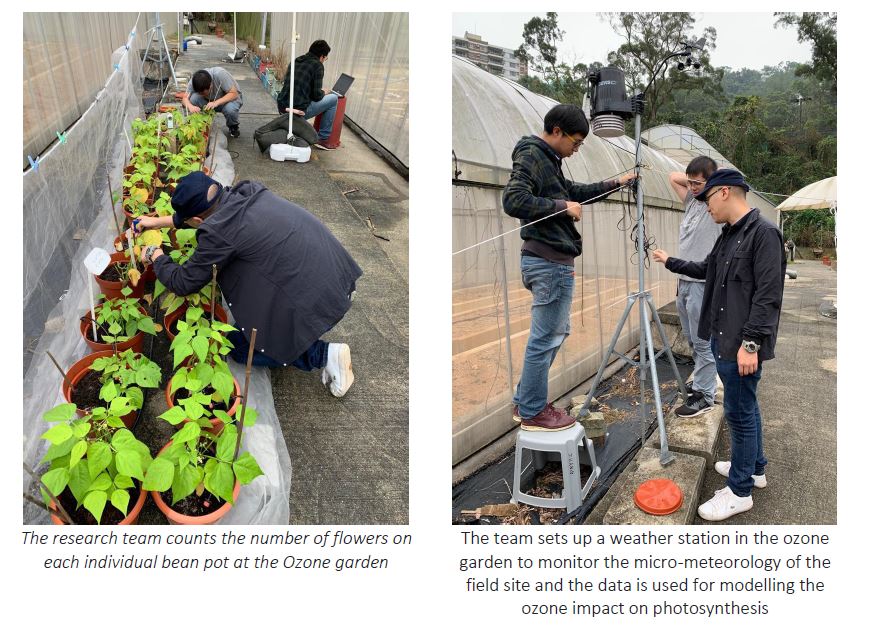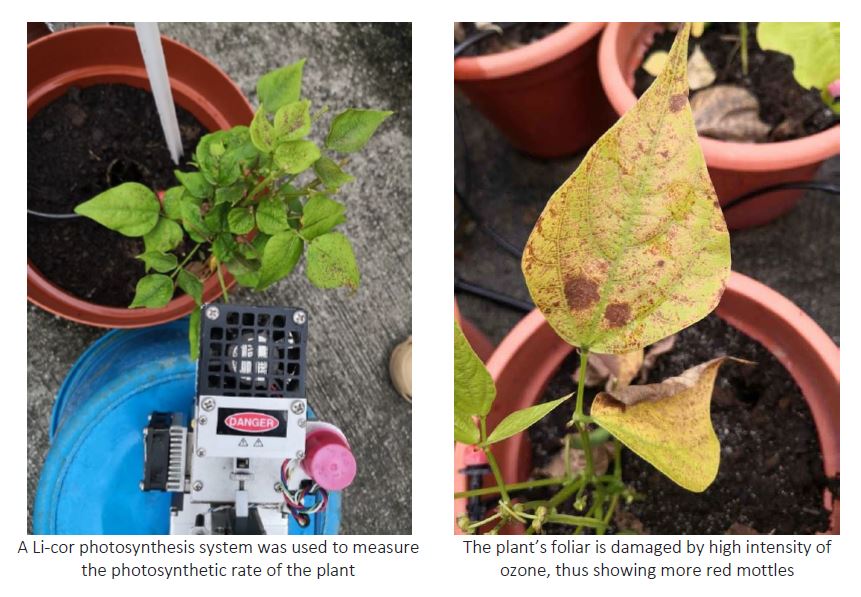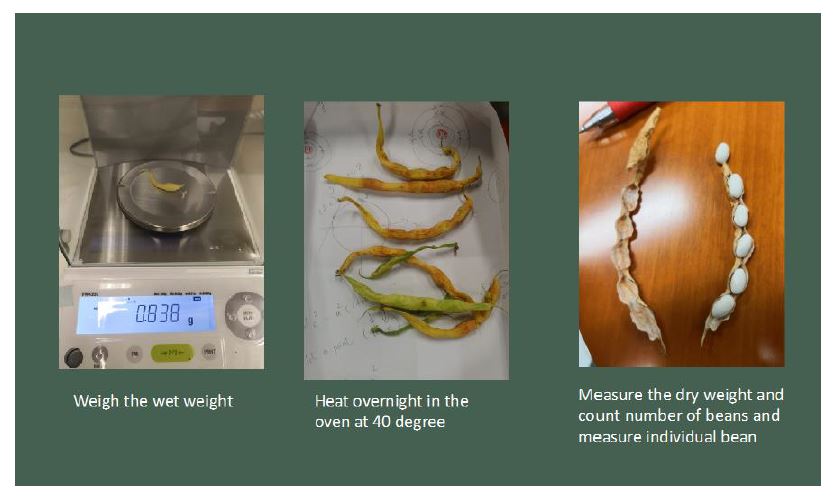Harmful Effect of Ozone Damage on plants
CUHK Proves and Visualises the Harmful Effect of Ozone Damage on Plants
First Plant-based Measurement of Ozone in South China Region

A research team led by Professor Amos Tai, Associate Professor of the Earth System Science Programme at The Chinese University of Hong Kong (CUHK), has successfully quantified and visualised the impact of Hong Kong air pollution especially ozone pollutant on plants and the environment. Although the experiment took place in a rural area and in Spring, which would usually have a lower average ozone concentration, the pollutant level still reached high enough to do significant damage to the bioindicator plant. The finding was recently published in Atmosphere.
Hong Kong is one of the most densely populated cities in the world, with millions of people living and working in close proximity to busy roads with severe air pollution. Among various air pollutants, surface ozone is of particular concern. According to the 2019 air quality monitoring results announced by the Environmental Protection Department, the average ozone level has been increasing over the past 20 years, despite overall air quality and other four major pollutants level being on an improving trend. (https://www.info.gov.hk/gia/general/202001/20/P2020012000874.htm?fontSize=1)
Ozone is mostly produced photochemically from anthropogenic precursor gases such as Volatile Organic Compounds (VOCs) and Nitrogen Oxides which are emitted by vehicles. Ozone can cause considerable harm to both human and ecosystem health. The phytotoxicity of ozone has been shown to damage photosynthesis, reduce gas exchange, induce early leaf senescence, and retard growth in both natural vegetation and crops. As plants play vital roles in regulating the ambient environment, ozone-induced damage in plants may further accelerate environmental degradation, with severe consequences for human health.
Professor Tai and his research team established a free-air experimental garden to monitor, quantify and understand the mechanisms of ozone damage on plants. In this experimental field, dubbed the “ozone garden”, the team grew cultivars of beans with different ozone sensitivities as a bioindicator of the local air pollution impacts on ecosystems.

Professor Tai is excited about establishing the “ozone garden”, “Such a free-air ozone garden has been built at many locations in the US and Europe but this is the first of its kind in South China. The data obtained from this garden is essential to demonstrating the impact of air pollution on plants under locally specific environmental conditions and to deriving important parameters of ecophysiology and biometeorology that can be used to build a regionally relevant earth system model for predictive purposes.”
The species of bean that is chosen shows a distinctive red mottles pattern on the leaves according to the level of ozone in the atmosphere. And there are two genotypes of beans, one sensitive type and one resistant type, that show different sensitivity to ozone. The beans are supplied by the Centre for Ecology and Hydrology, UK. Dr.Felix Leung, project leader, found that the ozone-sensitive genotype bean suffers higher ozone-induced foliar damage, with more red mottles and a higher death rate. The sensitive genotype plants also produce 30% more flowers than the resistant genotypes. This is the result of stress-induced flowering caused by ozone, which triggers the plant to produce more flowers and therefore maintain its chance of fertilisation and reproduction. The team also found that the resistant genotype has a higher success rate (17% more) of fruiting development from flowering to bean formation and less immature or dead pods than the sensitive one.

The findings show that the ozone level in Hong Kong is high enough to cause significant damage to plants even in the countryside, like CUHK campus. It has important implications for farmers in Hong Kong and South China where their crops suffer from ozone pollution. This experiment also gives evidence to support a clean air policy that reduces vehicle emissions in Hong Kong. Continuing work on the experiment will be carried out to investigate the physiology of the beans under various ozone concentrations in a controlled environment.
This research was funded by the Research Sustainability of Major RGC Funding Schemes of The Chinese University of Hong Kong, and supported by the State Key Laboratory of Agrobiotechnology (CUHK).


About the State Key Laboratory of Agrobiotechnology, Partner Laboratory in The Chinese University of Hong Kong
The laboratory was established essentially to tackle the pressing demand of food supply by increasing yield, food safety, and nutrition in a country of a billion-plus people. The laboratory builds on the close partnership between CUHK and China Agricultural University, both leaders in agrobiotechnology. The two universities work together on the development of molecular biotechnology and its practical applications in terms of the increase of yields and enhancement of the nutritional value of crops.
About the Institute of Environment, Energy and Sustainability (IEES)
The Institute of Environment, Energy and Sustainability (IEES), established in 2011, aims to promote multidisciplinary environmental research and education for The Chinese University of Hong Kong (CUHK). Through integrating CUHK’s strengths in various cognate disciplines, IEES aspires to build synergy to address some of the most pressing issues confronting the long-term sustainability of human society. IEES endeavours to work in collaboration with industrial, government and non-government organisations as well as different community stakeholders to build a better environment for our future generations.
Note:
Evidence of Ozone-Induced Visible Foliar Injury in Hong Kong Using Phaseolus Vulgaris as a Bioindicator, Atmosphere
https://www.mdpi.com/2073-4433/11/3/266





